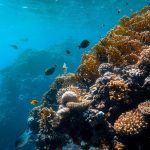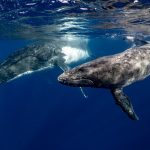 March 18, 2021 2:07 pm
Published by Climate Extremes
March 18, 2021 2:07 pm
Published by Climate Extremes
In this study, the researchers used a high-resolution numerical simulation of the cold tongue region to show that strong turbulent mixing occurs not only on the Equator, but also off the Equator on the edge of the cold tongue associated with passing energetic oceanic waves with periods of 15-40 days known as Tropical Instability Waves.
 March 18, 2021 1:16 pm
Published by Climate Extremes
March 18, 2021 1:16 pm
Published by Climate Extremes
This research around central Pacific El Niños is important for agricultural and water resources planning efforts in the Murray Darling Basin region and may help with seasonal prediction efforts to predict drought‐breaking rain such as occurred in early 2020.
 March 18, 2021 11:57 am
Published by Climate Extremes
March 18, 2021 11:57 am
Published by Climate Extremes
Coral reefs are known to produce a chemical called dimethyl sulfide (DMS), which, when released into the atmosphere, can help form or grow tiny particles known as aerosols. Currently, this source of aerosols produced by coral reefs is unaccounted for in climate science and hence the impact of coral reef extinction on aerosols and climate is unknown.
 March 16, 2021 12:50 pm
Published by Climate Extremes
March 16, 2021 12:50 pm
Published by Climate Extremes
El pasado 08 de marzo conmemoramos el Día Internacional de la Mujer, el cual es un día que me resulta en un encuentro de emociones opuestas.
 March 16, 2021 12:45 pm
Published by Climate Extremes
March 16, 2021 12:45 pm
Published by Climate Extremes
On March 8, we celebrated International Women's Day but for Denisse Fiero Arcos, it's a day that raises mixed feelings.
 March 15, 2021 10:10 am
Published by Climate Extremes
March 15, 2021 10:10 am
Published by Climate Extremes
This study uses a high‐resolution climate model to investigate how and why marine heatwaves would change for the Australian region. The relative impacts of increases on background ocean temperature and changes to intrinsic temperature variations are compared.
 March 9, 2021 3:38 pm
Published by Climate Extremes
March 9, 2021 3:38 pm
Published by Climate Extremes
Maximum temperatures in Australia during spring have exceeded historic records on multiple occasions in recent years. Understanding what drives these high temperatures may lead to better forecasts of extreme heat in the future.
 March 8, 2021 1:54 pm
Published by Climate Extremes
March 8, 2021 1:54 pm
Published by Climate Extremes
As part of the Future Seas project, this paper summarizes knowledge and perspectives on ocean literacy from a range of disciplines, including but not exclusive to marine biology, socio-ecology, philosophy, technology, psychology, oceanography and human health.
 March 5, 2021 1:19 pm
Published by Climate Extremes
March 5, 2021 1:19 pm
Published by Climate Extremes
CLEX researchers found coastal marine heatwave hotspots were concentrated along the Mediterranean Sea, Japan Sea, south‐eastern Australia and the north‐eastern coast of the United States. They also found the frequency of these events and their duration globally increased by 1–2 events per decade and 5–20 days per decade. Most of the marine heatwave hotspots identified were associated with high upward trends.
 March 5, 2021 11:19 am
Published by Climate Extremes
March 5, 2021 11:19 am
Published by Climate Extremes
The most intense and destructive tropical cyclones generally go through a period of rapid intensification, where "rapid" means that the near-surface winds increase by more than 15 m/s (54km/hr) in 24 hrs. However, the physical processes by which storms rapidly intensify are not well understood. This study uses very high-resolution simulations with the UK Met Office Unified Model of the 2016 north-Pacific tropical cyclone, Nepartak, to explore the processes responsible for its rapid intensification.









